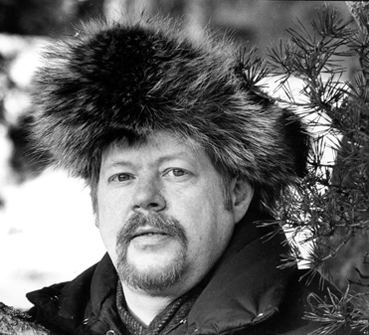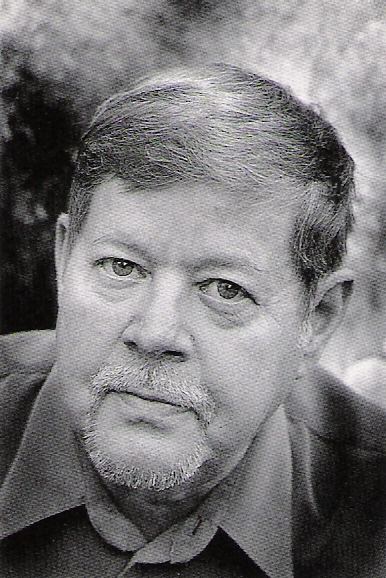Name Arto Paasilinna | Role Writer Spouse Terttu Annikki Kasper | |
 | ||
Born 20 April 1942 (age 83) Kittila, Lapland, Finland ( 1942-04-20 ) Occupation journalist, novelist, poet Education Adult Education College, Lapland (1962-1963) Period since 1972 (fiction)since 1964 (non-fiction) Movies The Year of the Hare, Le Lievre de Vatanen Parents Vaino Paasilinna, Hilda-Maria Paasilinna Siblings Erno Paasilinna, Reino Paasilinna, Mauri Paasilinna, Sirpa Paasilinna-Schlagenwarth Books The Year of the Hare, The Howling Miller, Hirtettyjen kettujen metsä, Der wunderbare Massenselbstmord, Der Sommer der lache Similar People | ||
L auteur du mois arto paasilinna
Arto Tapio Paasilinna (born 20 April 1942 in Kittilä) is a Finnish writer, being a former journalist turned comic novelist. One of the most successful novelists of Finland, he has won a broad readership outside of Finland in a way few other Finnish authors have before. Translated into 27 languages, over seven million copies of his books have been sold worldwide, and he has been claimed as "instrumental in generating the current level of interest in books from Finland".
Contents
- L auteur du mois arto paasilinna
- Arto paasilinna cours de francais 2015
- Life
- Health problems
- Works
- Filmography
- References

Paasilinna is best known for his 1975 novel The Year of the Hare (Jäniksen vuosi), a best-seller in France and Finland, translated into 18 languages, awarded three international prizes, and adapted twice into feature films.
Arto Paasilinna's brothers are authors Erno Paasilinna, Reino Paasilinna and Mauri Paasilinna.
Arto paasilinna cours de francais 2015
Life
Arto Paasilinna was born on 20 April 1942 in the Alakylä part of the municipality of Kittilä, in Lapland, Finland. His parents were Väinö Paasilinna (1902–1950, born Gullstén, changed his surname in 1934 after a family conflict) and Hilda-Maria Paasilinna (1908–1983, born Niva). The Paasilinna's had seven children, five sons and two daughters, including the writer Erno Paasilinna; the author, MEP and TV personality Reino Paasilinna; the painter Sirpa Paasilinna-Schlagenwarth; and the writer Mauri Paasilinna.
Paasilinna studied at the General and Elementary School Line at the Lapland Folk Academy. He initially worked as a journalist at Nuoren Voiman Liitto, Nuori Voima-lehti and various newspapers as writer and editor. At the weekly magazine Apu, he was an editor (1968–1970) and later a columnist (1975–1988).
In 1975, at the age of 33, Paasilinna found journalism growing "more superficial and meaningless" and desired a change; that summer, he sold his boat to fund the writing of The Year of the Hare. The book was an immediate success and from 1975 on Paasilinna became an independent writer able to support himself with his novels, signed to Finnish publisher WSOY since 1977. He still writes journalism articles and has been a columnist on Finnish radio.
In 2000, Paasilinna was included in the 6th edition of literary critic Pekka Tarkka(fi)'s dictionary Suomalaisia nykykirjailijoita ("Finnish Literary Authors", 1st ed. 1967).
In 2002, for Paasilinna's 60th anniversary, journalist Eino Leino published a biography of Paasilinna called Lentojätkä. Arto Paasilinnan elämä" ("The Flight Dude").
The same year Paasilinna published his own autobiography called Yhdeksän unelmaa ("Nine Night's Dream").
Health problems
In 2008 and 2009 while still living in Espoo, Paasilinna was featured in Finnish tabloids for his incoherent behaviour, including reckless driving. In October 2009 he was rushed to a hospital due to a stroke. In April 2010 he was moved to a convalescent home for recovery, and his son named as his treasurer.
Works
As of 2009, Paasilinna has published about 12 non-fiction books and 35 novels, with almost one novel each year from 1972 to 2009 (except 1973, 1978, 2002): as his publishers say, "The annual Paasilinna is as much an element of the Finnish autumn as falling birch leaves." He is "constantly being translated into new languages", and 18 of his books have been translated overall into at least 27 languages: the translations beyond neighboring Scandinavian countries include: 16 into German, 11 into French, 9 into Slovenian, 8 into Italian, 6 into Dutch, 5 into Spanish, 4 into Korean, and 2 into English, Ukrainian and Catalan. Described as "The brightest star in the Finnish translated-literature firmament" by Finnish newspaper Helsingin Sanomat, his success is claimed as having been "instrumental in generating the current level of interest in books from Finland" by his publisher WSOY.
Paasilinna's books reflect quite common Finnish life, usually from a middle-aged male perspective, and in rural Finland. Fast-paced, light and humorous in style, many of these narratives can be described as picaresque adventure stories with often a satirical angle towards modern life. Certain of his stories have been described as modern fables, such as The Year of the Hare, which sets an ex-journalist's quest for authentic life and values in the Finnish backwoods against the emptiness and meaninglessness of modern consumer society. Vatanen, the hero of this novel, takes an injured young hare with him on his quest, nursing the animal back to health, while his own dissatisfaction with his former urban lifestyle becomes ever more evident.
His 1974 novel Paratiisisaaren Vangit appears as Prisonniers du Paradis. This book is the humorous story of a UN charter that crashes on a deserted Pacific island. The passengers are lumberjacks and other forestry workers, midwives and nurses. As with The Year of the Hare (in French, Le lièvre de Vatanen), the narrator is a journalist. The multinational castaways (Finnish, Swedish, Norwegian and English) give Paasilinna ample opportunity to poke fun at issues of language domination and national stereotypes. The castaways set up a cashless society in which the only remuneration comes in the form of a cup of alcohol distilled in their jungle café in exchange for work for the collectivity. There is also a family planning clinic offering free IUDs. Soon, they find that they are not alone on the island and come up with a plan to get help.
Two of his novels, Lentävä kirvesmies and Rovasti Huuskosen petomainen miespalvelija were adapted to graphic novels by Hannu Lukkarinen.
Filmography
Many books have been adapted into movies (some dubbed into English), including:
